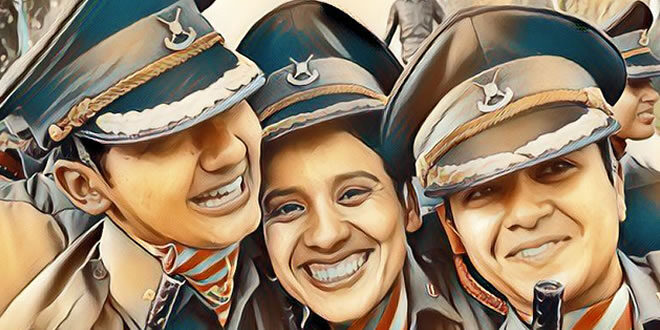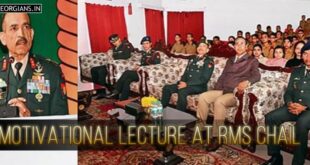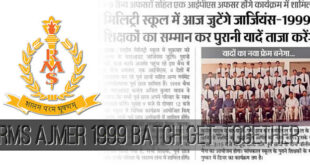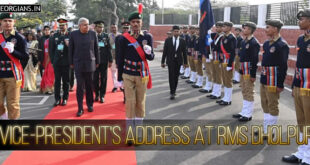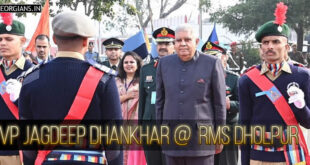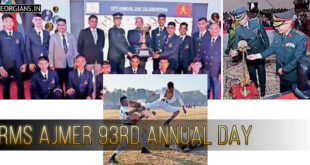Indian Army, Air Force and Navy began inducting women as short service commission officers in 1992. This was the first-time women were allowed to join the military outside the medical stream. One of the turning points for women in the military came in 2015 when Indian Air Force decided to induct them into the fighter stream. In 2020, the Supreme Court ordered the central government to grant permanent commission to women officers in the Army’s non-combat support units on par with their male counterparts. In March 2021, the Indian Navy deployed 4 women officers on warships after a gap of 23 years and 2 months later in May 2021, the Indian army got its first batch of 83 women soldiers in the military police. By 2022, women will also be able to join the premier tri-service training institute at the National Defence Academy (NDA).
Role of women in armed forces
Women and girls make up the half population of the world and certainly they make up half of the potential of the world which should be tapped if we intend to achieve the sustainable development goals by 2030. India has already taken that giant leap in the year 1992 when it started inducting women officers in Indian Defence forces. From the time in 1993 when the first woman short service officer was commissioned, we have come a long way. It’s not now a question of equality or what they can do and what they cannot do, a lot of water has flown under the bridge, we have traversed a long path. Ever since then the women officers started getting commissioned in the Officers Training Academy (OTA) Chennai or now from Gaya are trained for 11 months. They have different criteria or eligibility criteria for joining different streams, which means the various services and regiments. There are combat arms, combat support arms and services. They were not allowed to join the combat arms like the infantry, the armoured core, the mechanised infantry, the artillery and air defence. But they were allowed to join the combat support arms like the signals, engineers, aviation and the services like EME, ASC, ordinance, intelligence, Judge Advocate Generals and educational branches. They were allowed to join as short service officers, serve for 10 years and then be given 4 years extension but there was no selection for permanent commission, permanent commission was only in the medical and dental branches.
In 2020, the Supreme Court while hearing a batch of petitions allowed that they should be considered for permanent commission and now they are being considered. Right now, the army has almost 1750 women officers and out of them, 230 odd women are now in the permanent stream. That means they will retire at the same age as men and are now allowed to command their units in the stream.
Last year the Ministry of Defence has informed the Supreme Court that they will allow women to join NDA which is a huge leap. There’s been a lot of push in the past few years, in fact the last few crucial steps have been very important, be the intervention of the Supreme Court or by the decisions which have been taken by the government of the day and we are almost at a level now when this evolution comes full circle. The army is an organisation that is meant to find solutions for a crisis that might take place or which might not take place and that crisis is a war hence directly concerned with the security of the nation. If women officers or lady cadets are being inducted into the army there should be workshops or sensitization programmes for fellow male officers, commanding officers or people with whom they work so that they have a general idea of gender diversity so that they are also mentally prepared for the change.
Also, another great significance is that last year the Defence Ministry decided to allow feeder institutions RIMC (Rashtriya Indian Military College) and RMS (Rashtriya Military Schools) to induct girls thereby bringing gender parity. The implications of this decision would be seen within 10-15 years from now when these girls will mature up and grow up in these feeder institutions to give exams of NDA. The feeder institutions are playing a very important role and its part of that evolution process.
The number of women candidates found fit for induction is far lesser for some reason than the male officers, hope this will change when they start coming from Sainik Schools and RIMC which is the significance of these feeder institutions. This decision of inducting woman girl cadets into Sainik school will make the most important difference, but actually, the first batch has already started in 2018 at the Captain Manoj Pandey Sainik school Lucknow with 15 girls.
It is very important that there has to be no compromise on the aspect as far as standards of functioning, standards of induction are concerned and there’s no male or female comparison. This change is going to manifest itself at the ground in these feeder institutions.
These are the views and insights on this very key aspect that is the role of women in armed forces, the evolutionary process, the significant decisions which have been taken recently to ensure the assimilation of women in armed forces and course the feeder institutions which play an important and crucial role.
 Georgians Rashtriya Military Schools
Georgians Rashtriya Military Schools
